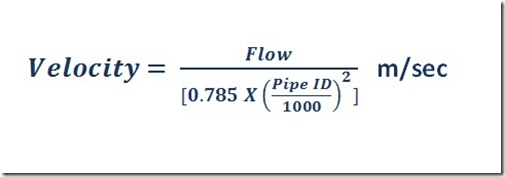

2002).Īnother approach are numerical simulations to study individually the effects of the various processes. 2006) or Fabry-Perot interferometry (e.g.
RAM PRESSURE VELOCITY FULL
Technically it is nowadays possible to observe the full 2D velocity field (VF) of local galaxies in optical wavebands using integral field units (IFUs), i.e. Gravitational potential of galaxies and its distortions due to interactions with their direct surroundings can be used to disentangle between external and internal processes of galaxyĮvolution. As the physical processes involved in star formation are poorly understood, additional properties of galaxies were investigated to study whether a galaxy has an interaction with its environment or not. One possible way is to study the evolution of the star formation activity in galaxies and the dependence of this quantity on the galaxies environment (Balogh et al. It is crucial to identify and disentangle different interaction processes, also at intermediateĪnd high redshift. Strong these different processes influence the evolution of cluster galaxies is still under debate. Gunn & Gott 1972), galaxy harassment (e.g. Among these mechanisms ram-pressure stripping (e.g. Many different mechanisms have been studied with special emphasis on their effect on the morphology and the star formation of cluster galaxies. They have found an excess of blue objects at z = 0.5 with respect to lower redshift systems, the so-called Butcher-Oemler effect. In addition Butcher & Oemler ( 1978) showed that there is a strong evolution from bluer to redder colours in cluster galaxies. It has been found that the fraction of star-forming and post-star-forming systems increases significantly with redshift (Dressler et al. Since the late 1970s observations have revealed an evolution of galaxy cluster members with redshift. Key words: galaxies: clusters: general - galaxies: abundances - galaxies: interactions - galaxies: ISM - X-ray: galaxies: clusters These simulated observations show many features which depend strongly both on the strength and the duration of the external ram pressure. Finally we provide simulated X-ray, HĪnd HI observations to be able to compare our results with observations in these wavebands. As the gas in a galaxy has a complex velocity pattern due to the rotation and spiral arms, the superposition of the internal velocity field and the ram pressure causes complex structures in the gaseous wake which survive dynamically up to several 100 Myr. Ram-pressure stripping can shift the location of star formation from the disc into the wake on very short timescales. Young stars can be found throughout the stripped wake with surface densities locally comparable to values in the inner stellar disc. Continuously stars fall back to the old stellar disc, building up a bulge-like structure.

Up to 95% of all newly formed stars can be found in the wake of the galaxy out to distances of more than 350 kpc behind the stellar disc. The enhancement of the star formation depends more on the surrounding gas density than on the relative velocity. The star formation of a galaxy is enhanced by more than a magnitude in the simulation with a high ram-pressure (5ġ0 -11 dyn/cm 2) in comparison to the same system evolving in isolation. The temperature of the surrounding gas was initially 1 The relative velocity was varied from 100 km s -1 to 1000 km s -1 in different surrounding gas densities in the range from 1ġ0 -27 g/cm 3. All gas particles within the computational domain having the same mass resolution. Special emphasis was put on the gas within the disc and in the surroundings. By applying a combined N-body/hydrodynamic description (GADGET-2) with radiative cooling and a recipe for star formation and stellar feedback 12 different ram-pressure stripping scenarios for disc galaxies were calculated. Several mock observations in X-ray, HĪnd HI wavelength for different ram-pressure scenarios are presented. We investigate the dependence of star formation and the distribution of the components of galaxies on the strength of ram pressure.

Received 19 December 2008 / Accepted 14 March 2009Īims. Ziegler 3ġ - Institut für Astro- und Teilchenphysik, Universität Innsbruck, TechnikerstraInnsbruck, AustriaĢ - Laboratoire Cassiopée, CNRS, UMR 6202, Observatoire de la Côte d'Azur, BP 4229, 06304 Nice Cedex 4, Franceģ - European Southern Observatory, Karl-Schwarzschild-Strasse 2, 85748 Garching, Germany The effect of ram pressure on the star formation, mass distribution and morphology of galaxies Astronomical objects: linking to databases.Including author names using non-Roman alphabets.Suggested resources for more tips on language editing in the sciences Punctuation and style concerns regarding equations, figures, tables, and footnotes


 0 kommentar(er)
0 kommentar(er)
